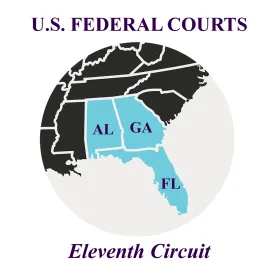We recently reported on the first Ethylene Oxide (EtO) verdict which resulted in a $363 million award to an Illinois plaintiff who alleged she developed cancer as the result of emissions from a medical sterilization facility in that state. Just a few days after the Illinois verdict, on September 23rd a federal judge in Georgia granted a dismissal motion in favor of a medical sterilization defendant in which the plaintiffs failed clear the initial standing and causation hurdles.
Background
The Georgia litigation involved 23 plaintiffs who claimed to have suffered various injuries as a result of exposure to EtO from the defendant’s plant in Augusta, Georgia. The plaintiffs, hailing from Georgia and South Carolina, sued in July 2021. They alleged that the defendant, Kendall Patient Recovery U.S. LLC (“KPR”), had operated its facility in such a way that it unlawfully emitted EtO and caused physical injury. For its part, KPR successfully argued that its use and release of EtO complied with both state and federal law.
Chief U.S. District Judge J. Randal Hall’s Ruling (Southern District of Georgia)
Judge Randal Hall granted the motion to dismiss, albeit without prejudice, with respect to 20 of the plaintiffs, and granted the motion to dismiss with prejudice as to the remaining three plaintiffs. The 20 plaintiffs who had their claims dismissed without prejudice will be allowed to refile if they can better make out their claims with increased specificity. According to Judge Hall, these 20 plaintiffs, who alleged negligence, willful and wanton misconduct, private nuisance, and ultrahazardous activity strict liability against KPR, did not meet the traceability requirement for standing and did not connect their injuries to the EtO emitted from KPR’s facility. Judge Hall was not persuaded by the causation claims, finding them too vague.
Judge Hall also noted that since these were personal injury cases, the requirement of making out a claim for traceability applied. The judge, finding that the 20 plaintiffs had a lack of standing, appeared to be loath to allow any Augusta-area resident to sue KPR for EtO emissions when their injuries could not reasonably be connected to the emissions.
As for the other three plaintiffs, their claims were dismissed with prejudice because they failed to provide sufficient information as to when they realized their claimed injuries were caused by KPR’s EtO emissions and thus made the court unable to determine if their suits were brought within Georgia’s two year statute of limitations. For one of these three plaintiffs, Judge Hall held that her claim failed on the merits as she was unable to articulate her negligence claim because she did not adequately support it with case law as to KPR’s legal duties to her. Further, Judge Hall noted, that particular plaintiff failed to make a case that KPR acted with willful or wanton misconduct and that it created a private nuisance given that there was no suggestion that it violated any statute or common law duty. It must be noted that Georgia has no common law cause of action for strict liability and the plaintiff did not bring the ultrahazardous activity claim under a specific statute.
Analysis
Despite the recent $363 million verdict in Illinois, which presumably will lead to additional personal injury lawsuits based on exposure to EtO, plaintiffs must, as an initial matter, sufficiently allege that the defendant owed a legal duty to them under applicable state and/or federal law. As we just saw in Georgia, that is not always a given. These types of claims must, as a preliminary matter, show that the plaintiffs have standing. Judges, acting as gatekeepers, must be vigilant and, for their part, defendants need to challenge standing at the outset.
Of course, the 20 Georgia plaintiffs still have the opportunity to amend their pleadings so as to show they in fact do have standing under Georgia law. The other three plaintiffs would appear to no longer have this option.




 />i
/>i